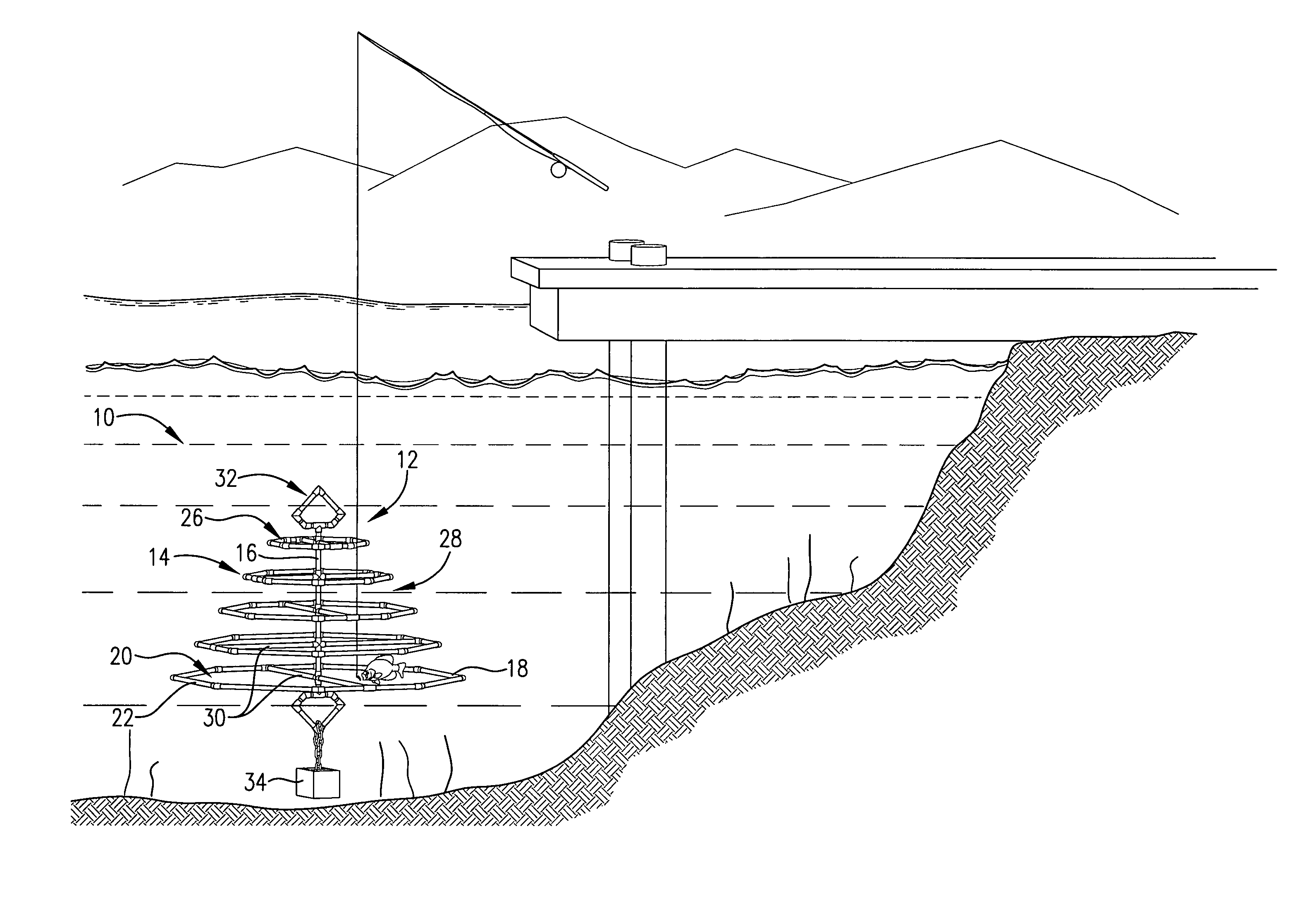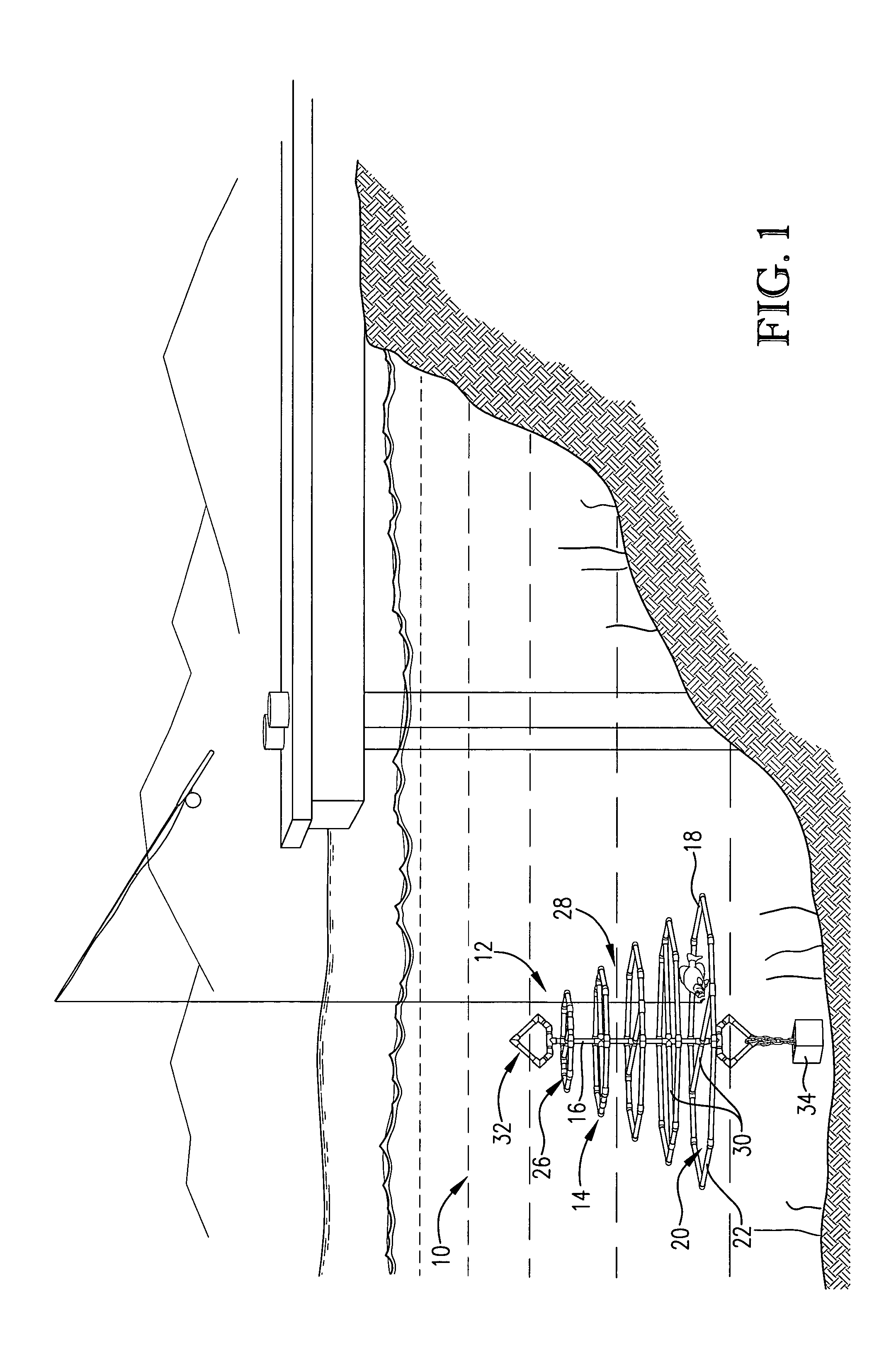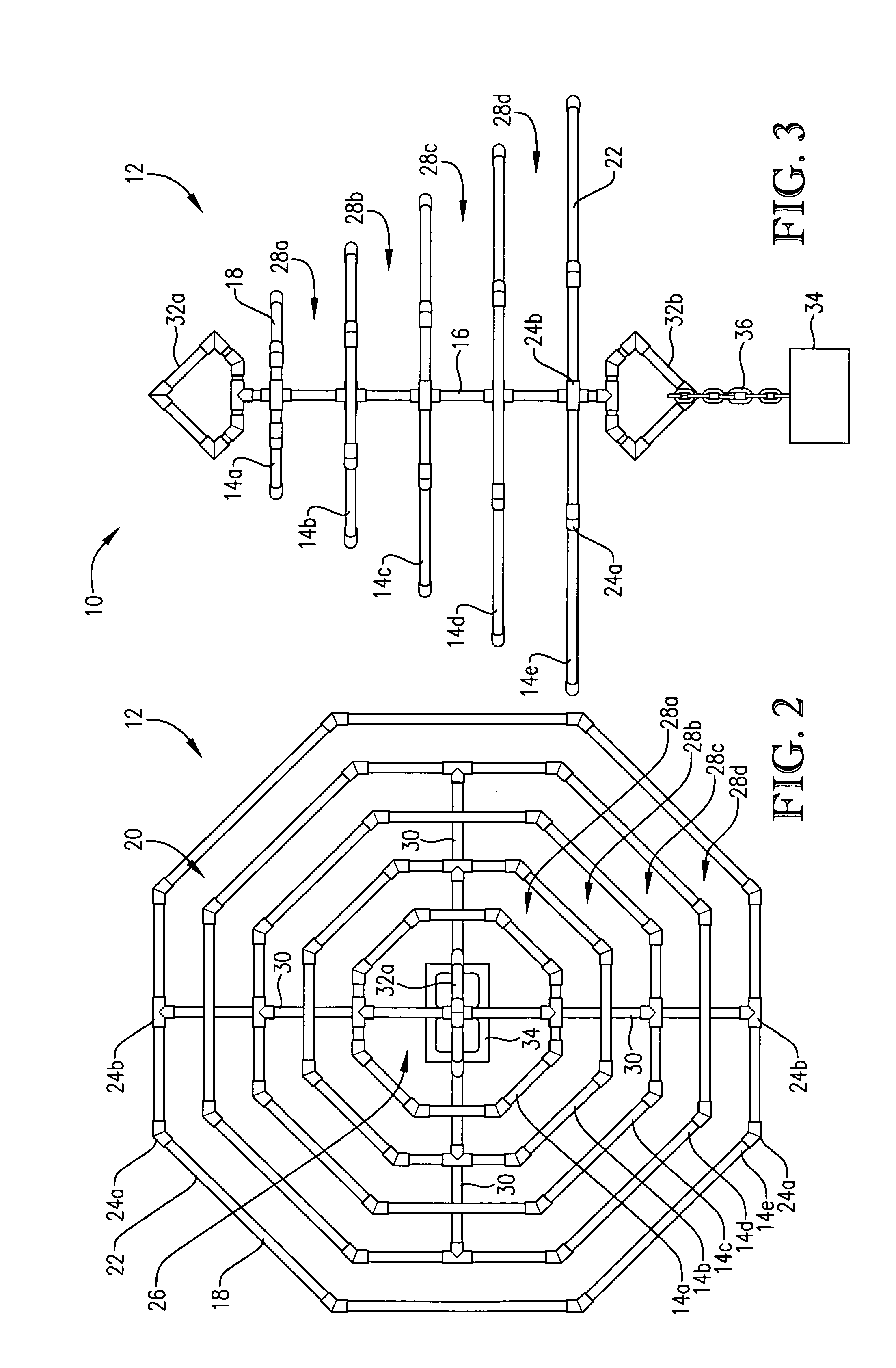Artificial fish habitat
a fish habitat and artificial technology, applied in pisciculture, aquaria, marine site engineering, etc., can solve the problems of limiting the beneficial aspects of fish habitat and convenient fish location, wasting more time replacing snagged hooks and broken lines than prior art fish habitats, pine and cedar trees are not water-resistant, etc., to achieve the effect of not snagging a fish hook on the habita
- Summary
- Abstract
- Description
- Claims
- Application Information
AI Technical Summary
Benefits of technology
Problems solved by technology
Method used
Image
Examples
Embodiment Construction
[0033]FIG. 1 illustrates a fish habitat 10 constructed in accordance with the principles of a preferred embodiment of the present invention. The habitat 10 is configured for placement within a body of water to provide an environment for fish or other aquatic life. The habitat 10 additionally facilitates fishing for fish and other aquatic life and may be utilized in any body of water, including ponds, lakes, streams, rivers, oceans, etc. In a preferred embodiment, the habitat 10 is utilized in a lake to provide an environment suitable for crappie. Additionally, while the habitat 10 is illustrated in proximity to a dock and a shore, the habitat 10 may be utilized in any portion of the body of water, including shallow and deep portions, and in fully submerged and partially submerged configurations.
[0034]Turning now to FIGS. 1–5, a first preferred embodiment of the present invention is illustrated generally comprising a habitat 10 including an open framework 12. The framework 12 is open...
PUM
 Login to View More
Login to View More Abstract
Description
Claims
Application Information
 Login to View More
Login to View More - R&D
- Intellectual Property
- Life Sciences
- Materials
- Tech Scout
- Unparalleled Data Quality
- Higher Quality Content
- 60% Fewer Hallucinations
Browse by: Latest US Patents, China's latest patents, Technical Efficacy Thesaurus, Application Domain, Technology Topic, Popular Technical Reports.
© 2025 PatSnap. All rights reserved.Legal|Privacy policy|Modern Slavery Act Transparency Statement|Sitemap|About US| Contact US: help@patsnap.com



